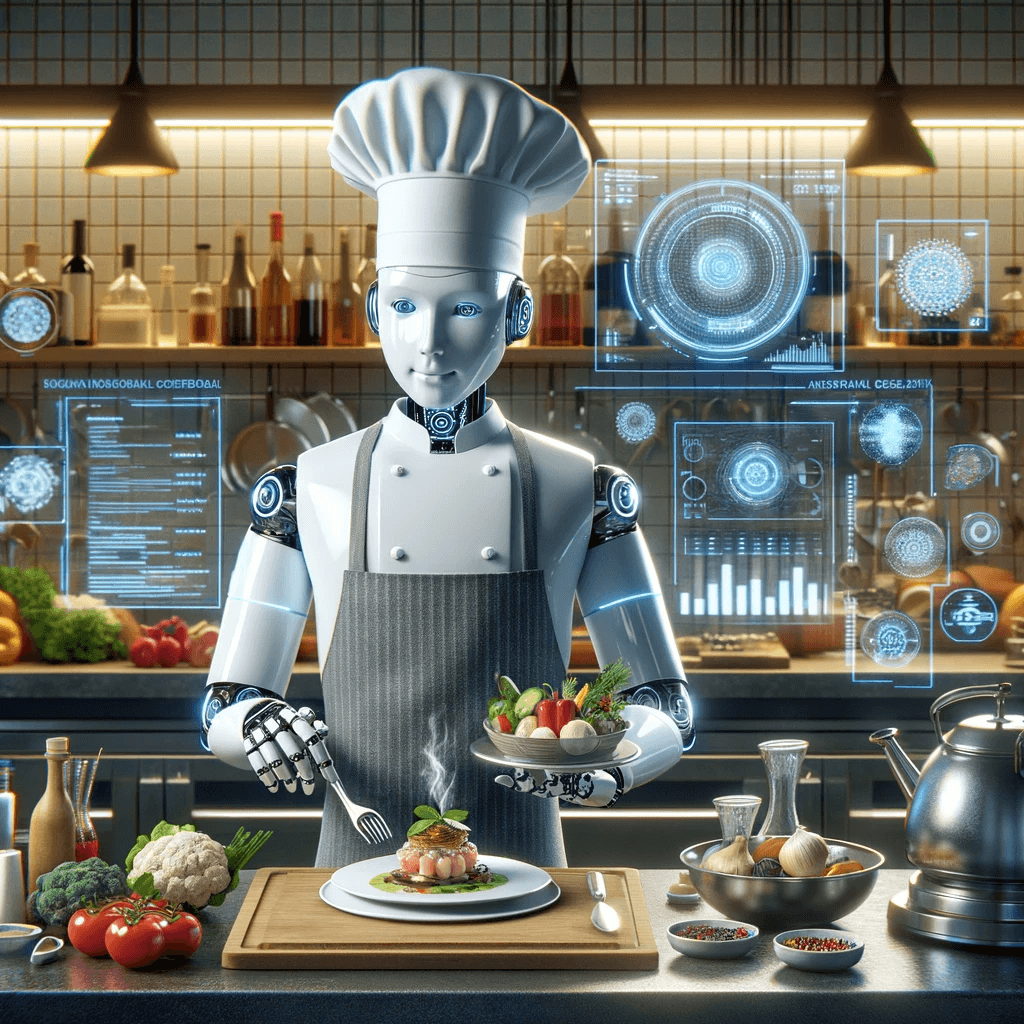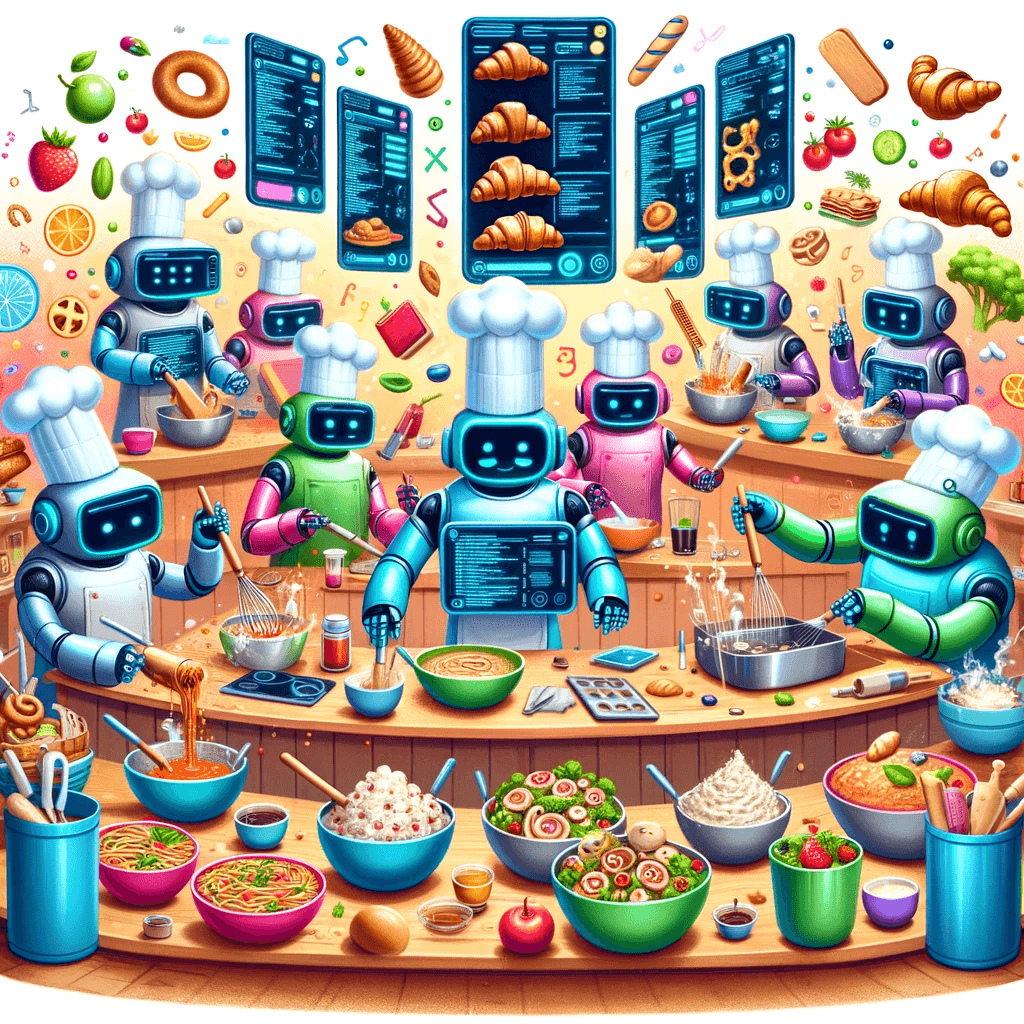In the gastronomic world, where the clatter of pans is poetry and the scent of simmering spices akin to a siren’s song, a new player has entered the kitchen: the AI Chef. Not just any fry cook from the digital diner, but a Michelin-starred maestro, a silicon sous-chef, if you will. Now, before you scoff and swear by your grandmother’s secret recipe, let me serve you a platter of thoughts, garnished with a sprinkle of humor and a dash of skepticism.
Culinary Code: A Digital Dance with Dishes
First, let’s whet our appetites with the possibilities. Imagine a chef that never tires, never misremembers a recipe, and never accidentally uses salt instead of sugar (unless it’s part of a deconstructed dessert experiment). This chef doesn’t just cook; it computes, concocting dishes based on an algorithmic analysis of culinary trends, dietary needs, and perhaps the alignment of the planets (because why not?).
Our AI chef could theoretically whip up a perfect Beef Wellington while simultaneously calculating the optimal aerodynamic shape for a flaky croissant. The fusion possibilities are endless. A traditional paella algorithmically enhanced with a touch of kimchi? Why, that’s just Tuesday in the AI kitchen.
But wait, there’s more. The AI chef, with its access to global data, could personalize your meal to the molecular level, considering your taste preferences, nutritional requirements, and even your current mood, deduced by a quick analysis of your latest tweets (because privacy in the kitchen is so last century).
Kitchen Chaos: When Data Meets Dough
However, not all is savory in the land of binary bouillabaisse. Imagine entrusting your palate to a chef whose understanding of flavor is as deep as its last data scrape. Sure, it can tell you that 67.3% of diners prefer a hint of rosemary in their lamb, but can it understand the soulful touch that turns a meal into an experience?
Here’s where our culinary code may curdle. Picture a dish designed for maximum Instagram likes rather than taste – a Frankenstein’s monster of food trends, where a quinoa kale smoothie meets a charcoal-activated vegan steak. Delicious? Debatable. Instagrammable? Absolutely.
And let’s consider the quirks of AI learning. One minute, you’re enjoying a classic Coq au Vin, the next you’re staring down a plate of “experimental” jellyfish tacos because the AI chef found an intriguing pattern in oceanic cuisine studies. There’s a fine line between avant-garde and “avant-gar-why?”
The Human Touch in a Pixelated Pantry
This brings us to the crux of the biscuit. Can an AI truly replace the human touch in cooking? The subtle adjustments, the intuition, the ability to read a diner’s reaction and tweak a dish to perfection? A chef’s journey is not just about following recipes to the letter; it’s about the stories, the failures, and the triumphs that simmer behind each dish. Can an AI capture that essence, or will it be lost in translation, like a poorly programmed pasta maker?
In conclusion, as we stand at the precipice of this culinary revolution, let’s remember that food is more than sustenance; it’s an art, a culture, and a dialogue between chef and diner. Whether AI can truly become a Michelin-starred chef or simply a high-tech helper in the kitchen remains to be seen. But one thing is for certain: the next time you find a bizarre ingredient in your dish, don’t blame the chef – blame the algorithm. Bon appétit!
Speaking of **culinary automation**, you might be interested in Automation in the food industry. If you’re curious about how a digital system might interpret the nuances of **flavor**, take a look at Flavor on Wikipedia. And for those who appreciate the artistry behind every meal, explore the concept of **gastronomy** in this informative article: Gastronomy. Lastly, if you’re intrigued by the intersection of



